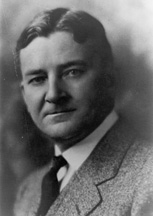Abraham Lincoln, 16th President of the United States, was born on this day 212 years ago at Sinking Spring Farm near Hodgenville, Kentucky. Today, his grand marble likeness gazes down on millions of visitors drawn to his memorial on the Mall in Washington.
As visitors climb the marble steps, pass marble columns, and enter the chamber of the Lincoln Memorial, they are awestruck by Daniel Chester French’s enormous marble statue of Abraham Lincoln. To what part of the Georgia marble figure is the eye drawn first? Possibly, the serious look on Lincoln’s face will remind the visitor of the critical time of Civil War through which the president guided our nation. Maybe the reeds wrapped together in the arms of Lincoln’s chair will prompt the visitor to remember the way that Lincoln wanted to keep us bound together as one nation.
If you want to settle into an evening with Lincoln and his age, your choice of titles will number in the thousands and in a variety of media. I am inclined to recommend Carl Sandburg's
Abraham Lincoln: The Prairie Years and The War Years. It is available as a one-volume abridgement of the original six-volume version of the biography. Not always accurate, not always "organized" as a traditional biography, Sandburg tells the story of Lincoln in the same manner a wise elder would deliver oral histories to those who wonder who they are and what they may become. It's romantic, rich, warm, organic, meandering, sometimes stormy, sometimes calm. I think the approach works well because the Lincoln story is in so many respects the American story. Also keep in mind that although well-known as a poet
Sandburg soon was revered in the U.S. as a poet/writer for the people once the first volumes appeared . With that in mind, I believe Old Abe would have been proud to select a writer of popular history and culture as his official biographer.
 |
| Abraham Lincoln Photo Portrait, early 1865 Alexander Gardner |
As you can see from the photo below, Lincoln and I go way back. That picture was taken in the spring of 1952 - complete with what would become my signature pose with binoculars - during my first visit to Washington. It began a long association with Old Abe and his American experience that peaked during the last thirty years of my career. What an honor it was to know him well and work to preserve his story for future generations visiting our national parks. For more about Abe Lincoln's early years at Sinking Spring and Knob Creek farms visit the Abraham Lincoln Birthplace National Historical Park website.
Beyond the photographs worth a thousand words we sometimes find a thousand words worth far more than the images and snippets we'll see and hear today about Abraham Lincoln. In 1959, the 150th anniversary of Lincoln's birth, Sandburg was asked to address a joint session of Congress on Old Abe's legacy. Here is his conclusion:
The people of many other countries take Lincoln now for their own. He belongs to them. He stands for decency, honest dealing, plain talk, and funny stories. "Look where he came from—don‘t he know all us strugglers and wasn‘t he a kind of tough struggler all his life right up to the finish?" Something like that you can hear in any nearby neighborhood and across the seas. Millions there are who take him as a personal treasure. He had something they would like to see spread everywhere over the world. Democracy? We can‘t say exactly what it is, but he had it. In his blood and bones he carried it. In the breath of his speeches and writings it is there. Popular government? Republican institutions? Government where the people have the say-so, one way or another telling their elected rulers what they want? He had the idea. It‘s there in the lights and shadows of his personality, a mystery that can be lived but never fully spoken in words.
Our good friend the poet and playwright Mark Van Doren, tells us, ―To me, Lincoln seems, in some ways, the most interesting man who ever lived . . . He was gentle but this gentleness was combined with a terrific toughness, an iron strength.‖ How did he say he would like to be remembered? His beloved friend, Representative Owen Lovejoy of Illinois, had died in May of 1864, and friends wrote to Lincoln and he replied that the pressure of duties kept him from joining them in efforts for a marble monument to Lovejoy. The last sentence of his letter saying, ―Let him have the marble monument along with the well assured and more enduring one in the hearts of those who love liberty, unselfishly, for all men.‖ So perhaps we may say that the well assured and most enduring memorial to Lincoln is invisibly there, today, tomorrow and for a long time yet to come in the hearts of lovers of liberty, men and women who understand that wherever there is freedom there have been those who fought and sacrificed for it.
Powerful words. And if your interested in hearing Sandburg's complete address it's available here. If you have never heard him speak, at least take a few minutes to experience the compelling voice and style of a master orator, one of our most beloved poets and perceptive participant-observers of the American experience.
Sources
Photos and Illustrations:
Lincoln photograph, Gardner collection, Library of Congress, Washington, D.C.
Abraham Lincoln statue, commons.wikimedia.org
Lincoln Memorial personal photo 1952, author's archive
Text:
Title, derived from the title of Carl Sandburg's poem,
The Long Shadow of Lincoln: A Litany
Quotation, National Park Service, Lincoln Memorial webpage, www.nps.gov/linc






































